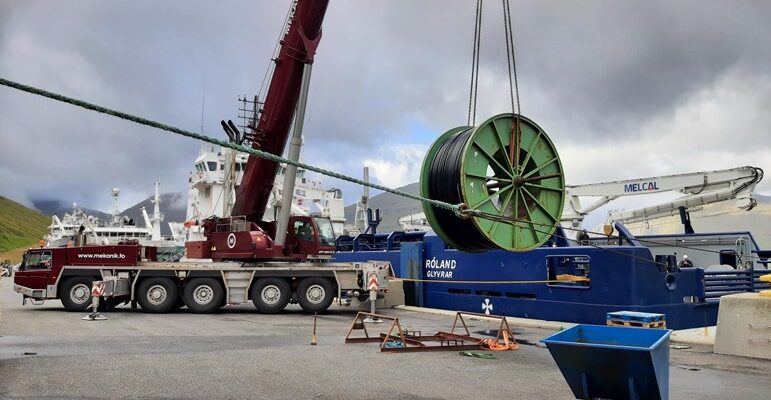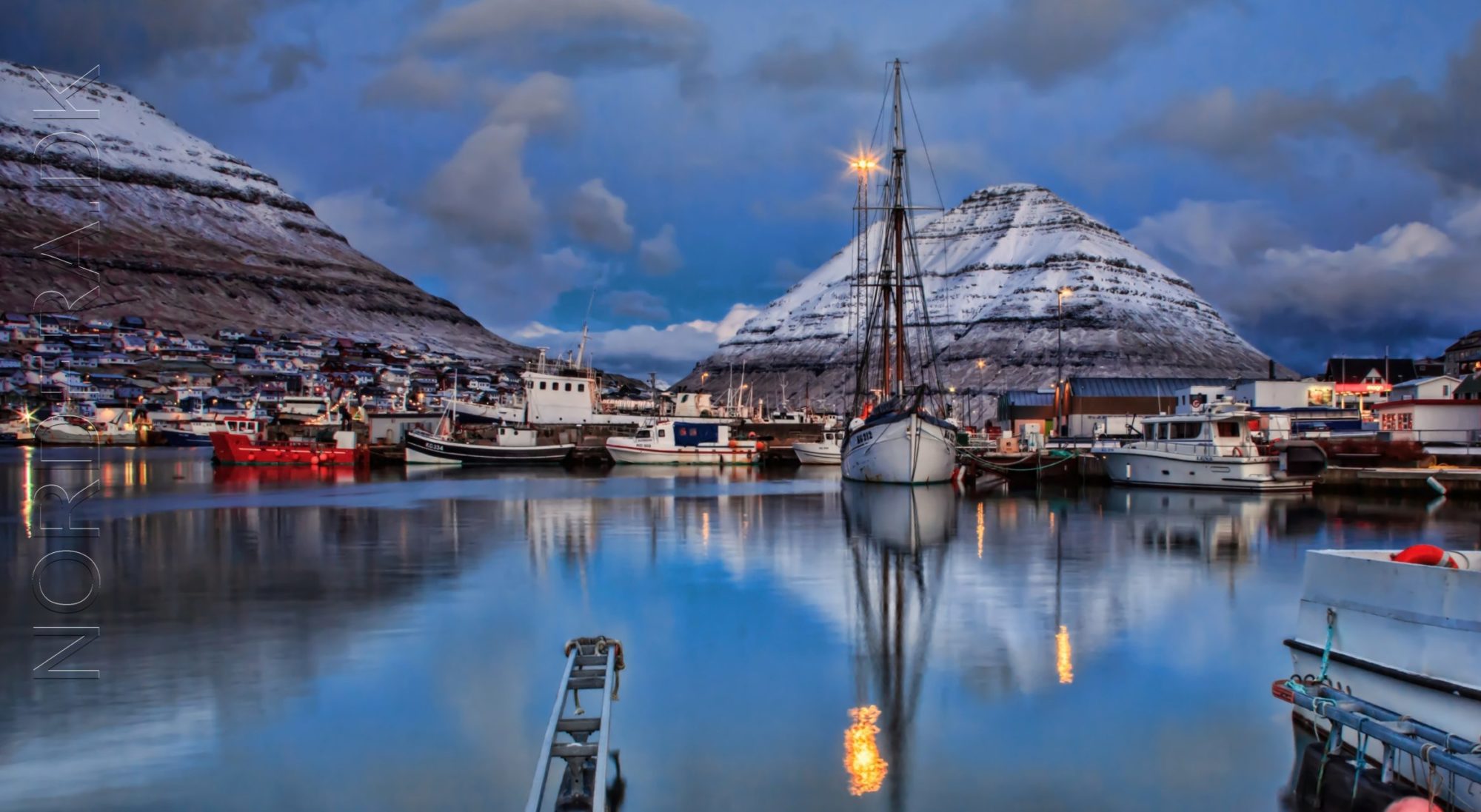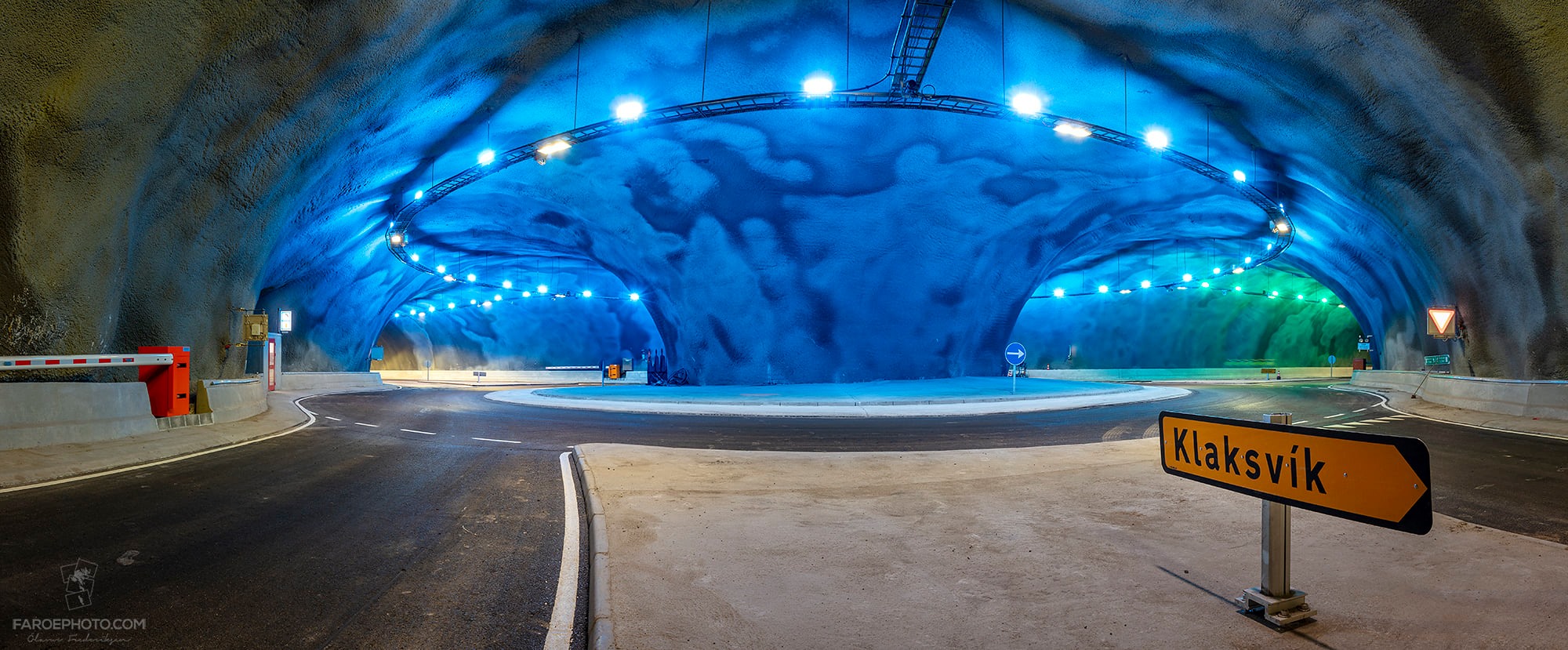
Earlier this month, electrical engineering firm JT Electric completed the latest installation of their 5.6-kilometer sea cable to a Bakkafrost fish farming site in the Faroe Islands. The cable provides power from Bakkafrost’s hatchery at Strond near Klaksvík to the remote fish farm off Skálatoftir, making it the longest cable of its kind in the Faroe Islands.
The installation is part of a Bakkafrost-driven transition to provide more sustainable power consumption. The majority of the Bakkafrost feeding barges in the Faroe Islands are powered by sea cables from land, organized and installed by JT Electric throughout the islands. As for the remaining barges still fueled by diesel, these are in the process of being shifted to electric power by cable.
“Our goal is to reduce our CO2 emissions by 50 percent by 2030,” said Jón Purkhús, farming manager for Bakkafrost North. “By using sea cables to supply our feeding barges with electricity from land we are reducing oil usage and thereby significantly reducing emissions from our fish farms.”
Designed by JT Electric and their cable partner, the unique 5.6 km sea cable is fitted with fiber inside. Installing the fiber connection along with the power supply has ensured that the site has a fast and safe link to the equipment onboard the feeding barge.
“All operations are undertaken remotely from the land based feeding central, therefore this smooth connection is essential,” JT Electic’s operational manager Leivur Hansen said. “This has been an exciting project for us,” he added. “The long distance made it necessary to use high-voltage electricity to effectively deliver power via the sea cable to the feeding barge. This challenge was solved in close collaboration with Faroese utility SEV.”


